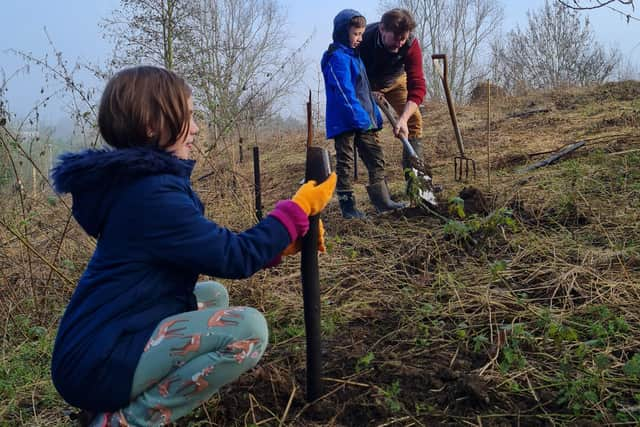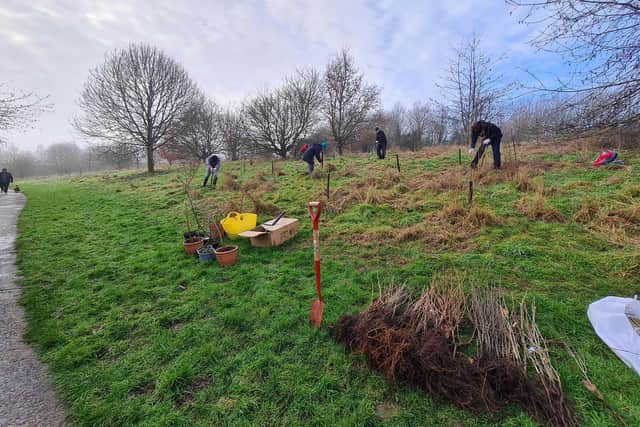Mass community planting sees 250 trees installed in Buckingham park
and live on Freeview channel 276
Two hundred and fifty trees were planted in Heartlands Park on Sunday, in a community tree planting event to celebrate the Queen’s Platinum Jubilee year.
Armed with spades and plenty of enthusiasm, 23 volunteers and members of the public met up with officers from Buckingham Town Council and Buckinghamshire Council, including Buckingham’s tree wardens for the mass tree planting.
Advertisement
Hide AdAdvertisement
Hide AdThe event was part of the Queen’s Green Canopy initiative, which encourages everyone to plant the right trees in the right place at the right time, so they continue to thrive for generations to come.


Chair of the town council's environment committee, Warren Whyte, said: “A big thank you to all our volunteers and staff for helping with the big tree planting session last Sunday morning.
"The planting of over 200 trees in the Heartlands Park is not only a great way for Buckingham to help contribute towards the Queen's Green Canopy, but also an important part of the town council’s Climate Emergency Action Plan, and improving the biodiversity of our lovely parks.”
Estates manager Lee Phillips said, “We are very lucky to have such enthusiastic volunteers who gave up their free time to come and plant trees and have donated a number of trees that people have grown themselves.
Advertisement
Hide AdAdvertisement
Hide Ad"Tree planting is so important because it helps to mitigate the effects of climate change, helps us to replace trees lost to ash dieback, and planting a mixture of native species throughout the woodland helps to increase the diversity of fauna and flora in our town’s green spaces.”


A small parcel of woodland overlooking the bowl in Heartlands Park was planted with a row of black poplar trees and a mixture of smaller native tree species.
The black poplar was once a common tree in Britain’s landscape, used for crafting cartwheels and wagon bottoms, but the species is now in decline.
Black poplar are dioecious, meaning male and female flowers are found on separate trees.
Advertisement
Hide AdAdvertisement
Hide AdFlowers are called catkins (male catkins are red and female catkins are yellow-green) and are pollinated by the wind.
Only around 7,000 wild black poplars now grow in Britain and only 600 of these are female trees.
With female saplings increasingly hard to procure, Buckingham Town Council was fortunate to be gifted two of the rare specimens, so Buckingham’s black poplars can pollinate for generations to come.
Anyone who is interested in becoming one of Buckingham’s volunteer tree wardens can email estates administrator Nina Stockill at [email protected]